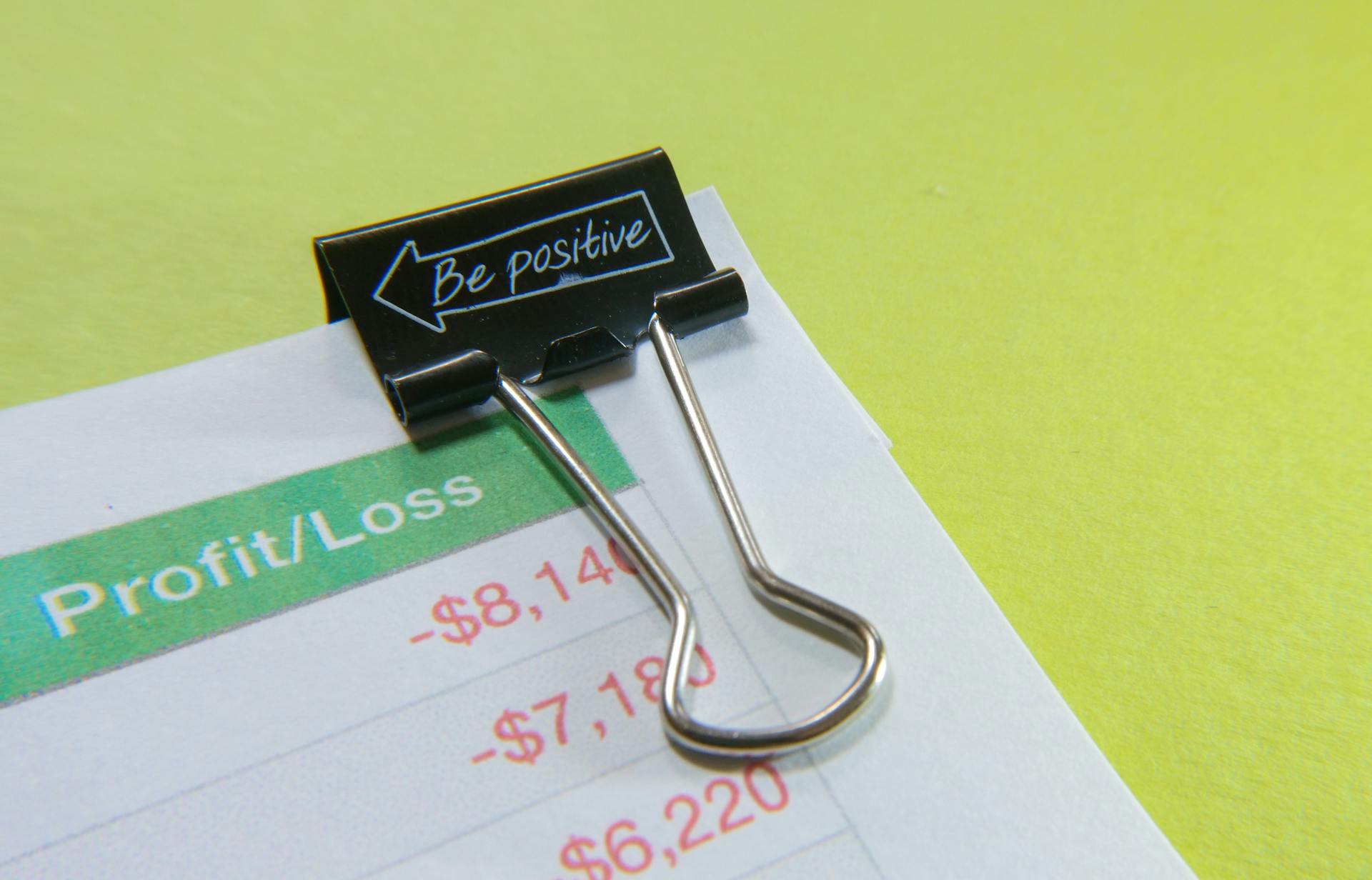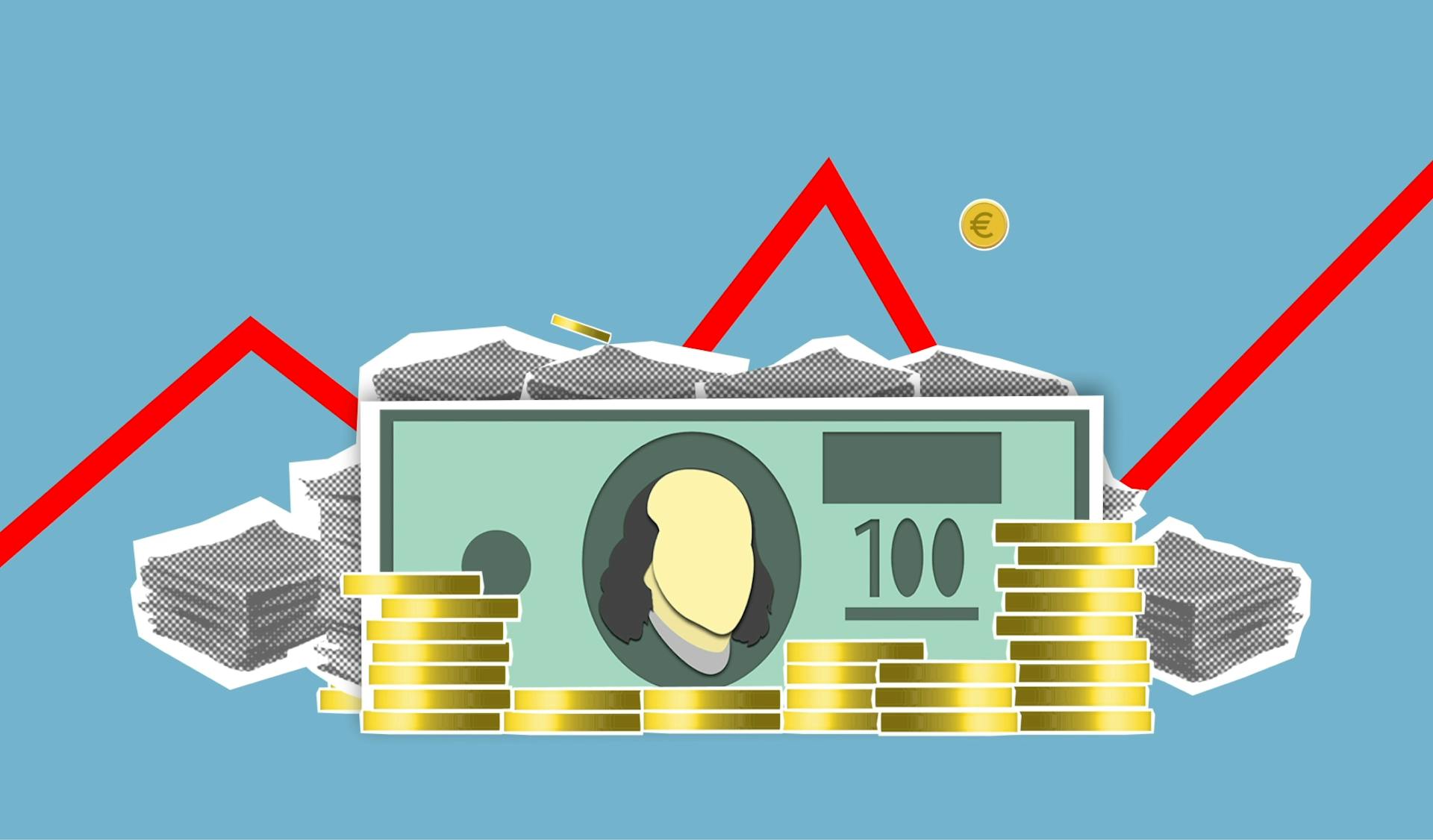
Return on capital employed (ROCE) is a crucial metric that helps businesses evaluate their profitability and efficiency.
ROCE measures a company's ability to generate profits from the capital it employs, including debt and equity.
Understanding ROCE is vital for making informed business decisions, such as investment, expansion, or cost-cutting initiatives.
A high ROCE indicates a company's ability to create value from its resources, while a low ROCE may suggest inefficiencies or poor management.
By optimizing ROCE, businesses can improve their bottom line and stay competitive in the market.
If this caught your attention, see: Growth Capital Company
What Is?
Return on capital employed (ROCE) is a financial ratio that measures a company's profitability and capital efficiency. It's calculated by dividing a company's earnings before interest and taxes (EBIT) by its capital employed.
ROCE shows how efficiently a company is using its capital to generate profits. A high ROCE indicates that a company is generating substantial profits from its capital base.
Capital employed refers to the total capital that a company uses in its operations, which includes both debt and equity. This includes shareholder equity plus debt liabilities.
A high ROCE is a sign that a company is investing its capital wisely and deploying assets efficiently to produce returns. It suggests the company has a sustainable competitive advantage in efficiently allocating capital into profitable investments.
Consider reading: Current Ratio Meaning High and Low
Calculating Return on Capital Employed
ROCE is a profitability ratio comparing a profit metric to the amount of capital employed. It answers the question of how much in profits a company generates for each dollar in capital employed.
To calculate ROCE, start with the calculation of net operating profit after taxes (NOPAT), also known as EBIAT. This is the numerator, which is subsequently divided by capital employed.
The denominator, capital employed, is equal to the sum of shareholders' equity and long-term debts, i.e. total assets less current liabilities. You can also calculate it by adding fixed assets to working capital.
There are multiple ways to calculate capital employed, but the most common is to use the formula: Capital Employed = Total Assets – Current Liabilities. This formula is preferred by analysts because it shows the profitability of a company for a very long time.
Another way to calculate capital employed is by using the formula: Capital Employed = Fixed Assets + Working Capital. This method is useful when you don't have the capital employed figure readily available.
A unique perspective: How to Calculate Debt to Income Ratio with Student Loans
The return on capital employed (ROCE) formula is: ROCE = EBIT / Capital Employed. This can be calculated using EBIT or NOPAT, but it's essential to maintain consistency in any comparisons or calculations.
A higher ROCE indicates that the company needs less capital to generate its profits, signaling effective management and often correlating with higher stock returns over time. Evaluating ROCE trends over time and comparing them across companies in the same industry provides insight into relative operating efficiency and capital allocation skills.
Here's a summary of the ROCE formula:
Interpreting Return on Capital Employed
A higher ROCE is always more favorable, as it indicates that more profits are generated per dollar of capital employed. This means that for every dollar invested in capital, the company generates more operating income.
To determine whether a company's ROCE is good, compare it against its competitors and not across different industries. For example, if Apple Inc.'s ROCE is 23% in 2017, it means that for every dollar invested in capital, the company generated 23 cents in operating income.
Curious to learn more? Check out: Operating Ratio
If ROCE is compared to the weighted average cost of capital (WACC), the rule of thumb is to accept investments if ROCE > WACC and reject them if ROCE < WACC. However, reliance on a single metric is not recommended, so ROCE should be supplemented with other metrics.
A low ROCE indicates that a company is not using its capital efficiently and is not generating a high return on its investment. On the other hand, a positive ROCE indicates that a company is efficiently utilizing its capital resources and generating excess returns over its cost of capital.
Here are some general guidelines for interpreting ROCE:
A high and stable ROCE is viewed very favorably by investors as it demonstrates the company's strong competitive position and effective management strategy. It signals that the business has robust fundamentals to deliver profitable growth consistently.
Improving Return on Capital Employed
Improving ROCE is crucial for businesses to increase profitability and stay competitive. To improve ROCE, Jennifer Brown, managing director of Pampeano, has cut costs by reducing speculative spend on social media channels that weren't generating positive returns.
A high ROCE consistently above 15% is considered solid in most industries, while over 20% is typically seen as very good, demonstrating efficient use of capital to earn high returns. Below 10%, and capital is yielding lackluster returns.
Companies can improve their ROCE by increasing profits relative to sales through operating efficiency and cost controls. Optimizing assets by generating more sales revenue per dollar of assets also boosts ROCE.
Here are some key strategies to improve ROCE:
- Reduce costs, such as speculative spend on social media channels
- Improve operating margin by reducing COGS, operating expenses, and increasing productivity
- Optimize assets by generating more sales revenue per dollar of assets
- Improve operational efficiency through automation, high-quality processes, and technology
By implementing these strategies, businesses can improve their ROCE and increase profitability, making them more competitive in the market.
What Is a Good Value?
A good ROCE value is a crucial metric to aim for in business. A rule of thumb is to aim for a ROCE of at least 15%, but this can vary depending on the industry.
In manufacturing, ROCE can exceed 25%, making it a benchmark to strive for. In retail, it typically ranges from 5% to 15%, which is relatively lower.
A consistently high ROCE indicates that a business is generating value for shareholders. It should be more than the weighted average cost of capital (WACC) to make a bigger return on the money spent funding the business.
A low ROCE indicates that a company is not using its capital efficiently. It's not generating a high return on its investment, which can be a red flag for investors.
A positive ROCE is a good sign, indicating that a company is efficiently utilizing its capital resources. It shows that the business has strong fundamentals to deliver profitable growth consistently.
A high ROCE is particularly important in capital-intensive industries like manufacturing and oil & gas. It indicates the company's success in generating returns on large capital outlays.
An ROCE consistently above 15% is considered solid in most industries. Over 20% is typically seen as very good, demonstrating efficient use of capital to earn high returns.
Consider reading: High Yield Dividend Stocks 2023
Operational Efficiency
Operational efficiency is a crucial aspect of improving return on capital employed (ROCE). It directly impacts profitability and ROCE, as companies that maximize output and minimize waste require lower capital investment to generate each unit of profit.
A company's operational efficiency can be improved by utilizing automation, high-quality processes, and technology to boost reliability, speed, and productivity. This can be seen in companies that focus on continuous improvement and optimizing resource usage, achieving structural advantages in converting sales into profits.
Investors favor companies with lean operations, smooth logistics, and productive workforces that deliver higher asset turnover and greater returns on invested capital. Markets typically reward operationally efficient firms with premium valuations, given their potential to expand margins and ROCE.
Companies that optimize their cost structure by eliminating waste, optimizing supply chains, and leveraging technology to drive structural cost advantages tend to have lower costs relative to revenue. This allows them to achieve higher profitability and greater ROCE compared to competitors.
Curious to learn more? Check out: Capital Cost Allowance
Here are some key factors that contribute to operational efficiency:
- Automation
- High-quality processes
- Technology
- Continuous improvement
- Optimizing resource usage
- Eliminating waste
- Optimizing supply chains
- Leveraging technology to drive cost advantages
By focusing on operational efficiency, companies can improve their ROCE and generate more value for shareholders. A rule of thumb is that you should be aiming for a ROCE of at least 15%, but the averages differ from industry to industry, so how well you're doing depends on what sector you're in.
Advantages and Disadvantages
ROCE has several advantages that make it a valuable metric for businesses. It allows for a comparison of profitability relative to both equity and debt.
One of the key benefits of ROCE is that it enables a comparison of companies of similar scale operating within the same industry. This makes it easier to identify which businesses are performing better.
ROCE is also useful in gauging the attractiveness of a business to investors.
Disadvantages of
ROCE can be misleading when comparing businesses across different industries, as it doesn't account for varying capital intensities.
Alastair Barlow, CEO of Flinder, suggests that business owners should focus on metrics like trading profitability, growth, cash, and operational indicators like sales activity, pipeline, and NPS, rather than relying solely on ROCE.
ROCE can be distorted by intangible assets, which are not reflected in the calculation.
The use of accounting profits rather than cash flows in ROCE calculations can lead to manipulation through accounting policies, such as conservatively increasing depreciation expense or opting for faster inventory costing methods.
Comparing ROCE across firms can be challenging due to differences in accounting treatments and subjective asset valuations.
Two firms with identical tangible operating capital can report vastly different total capital due to intangibles or hidden lease obligations, making ROCE comparisons less informative.
The varying capital intensity of different industries limits the use of ROCE to compare companies across sectors, as firms in capital-intensive industries like manufacturing or oil & gas will have lower ROCE compared to less capital-intensive services businesses.
Timing issues can also distort ROCE, as major capital investments can decrease ROCE in the short term, even if the company's profitability improves in the long term.
Debt levels can influence ROCE, but equity investors must also consider financial risk, as higher debt burdens can hurt shareholders through increased interest costs and bankruptcy risk.
Additional reading: Risk Return Tradeoff
Advantages

ROCE is a valuable metric for comparing companies of similar scale that operate within the same industry.
It allows a comparison of profitability relative to both equity and debt.
This makes it easier to evaluate a company's financial health and performance.
ROCE is also useful in gauging the attractiveness of your business to investors.
This is because it provides a clear picture of a company's return on investment.
You might like: The Current Ratio Measures a Company's
vs
ROCE and ROIC are often used interchangeably, but they measure different attributes.
ROIC specifically measures the return an investor or debt lender gets on the cash they have invested, calculated as Operating profit after tax divided by average invested capital.
ROCE, on the other hand, measures the return on capital employed, which is more relevant if you're deploying capital and have multiple options on how and where to deploy it.
In this case, ROCE helps you compare the return you get from each option, making it a useful metric for gauging the attractiveness of your business to investors.
ROIC is more focused on the return on invested capital, so it's a better metric if you're looking at the return an investor gets on their cash.
Additional reading: Cash Return on Capital Invested
Frequently Asked Questions
Is a high ROCE good or bad?
A high ROCE is generally a positive indicator, suggesting a company is efficiently generating profits and investing them for future growth. However, it's essential to consider the context and industry average to determine if it's truly a sign of success.
What is a good ROCE ratio?
A good ROCE ratio varies by industry, but generally, a ROCE above the industry benchmark is considered strong. To determine a good ROCE for your company, research the industry average and compare your results to that standard.
What's the difference between ROI and ROCE?
ROCE and ROI are two financial metrics that measure investment efficiency, but ROCE focuses on a company's overall capital usage, while ROI specifically compares the profit of a single investment to its cost
Sources
- https://www.americanexpress.com/en-gb/business/trends-and-insights/articles/return-on-capital-employed-meaning/
- https://corporatefinanceinstitute.com/resources/accounting/return-on-capital-employed-roce/
- https://www.wallstreetprep.com/knowledge/roce-return-on-capital-employed/
- https://www.profit.co/blog/kpis-library/finance/return-on-capital-employed/
- https://www.strike.money/fundamental-analysis/roce
Featured Images: pexels.com


